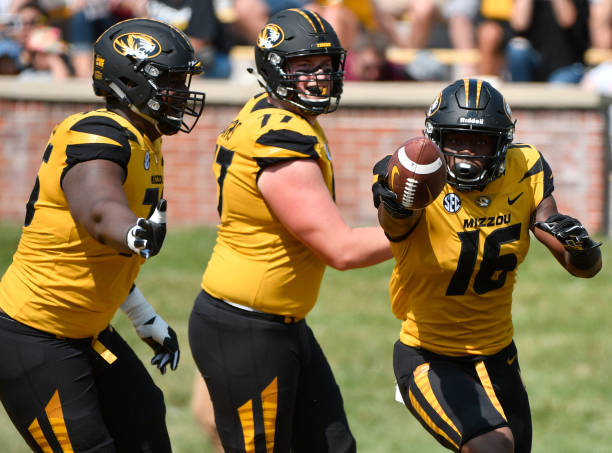Three Missouri football players have officially entered the NFL ranks. Darius Robinson marked a milestone by becoming the first Missouri player selected in the first round of the NFL Draft since 2017, chosen by the Arizona Cardinals as the 27th overall pick on Day 1. Ennis Rakestraw Jr. followed suit, heading to the Detroit Lions in the second round at the 61st overall pick, with NFL legends Barry Sanders and Detroit mayor Mike Duggan announcing his selection. Additionally, linebacker Ty’Ron Hopper surprised many by being chosen in the third round by the Green Bay Packers as the 91st pick.
Looking ahead, four more Missouri players remain hopeful for a draft call on Saturday, which could potentially tie the Tigers’ program record with seven picks in a single draft. Among these prospects is cornerback Kris Abrams-Draine, who despite not being selected in Day 2, stands as a promising candidate for Day 3. With his impressive record of 16 passes defended and four interceptions in the previous season, Abrams-Draine is anticipated to be picked in the upcoming rounds.
Offensive lineman Foster, with his notable contribution to Missouri’s offensive line, is also on the radar for NFL teams. Despite not securing a pick in the initial rounds, he remains a strong contender, with potential landing spots including the Ravens, Patriots, and 49ers in the later rounds.
Running back Cody Schrader, who achieved a single-season record at Missouri in 2023, presents a compelling story for NFL scouts. Despite concerns about wear and tear due to his journey from Division-II Truman State to Mizzou, Schrader’s impressive performance and unique narrative make him a viable option for teams in the later rounds, with the Kansas City Chiefs being a possible destination.
Lastly, safety JC Carlies and kicker Harrison Mevis round out Missouri’s prospects, with both having outside chances of being drafted on Day 3. Carlies, known for his versatility, may transition to linebacker to enhance his draft prospects, while Mevis, recognized for his long-distance kicks, remains a hopeful candidate despite the slim odds of a draft selection.

